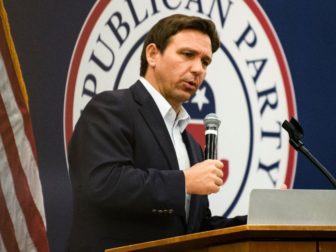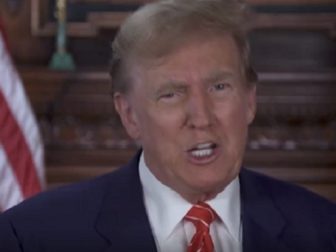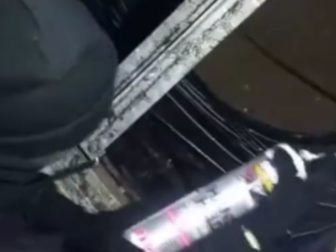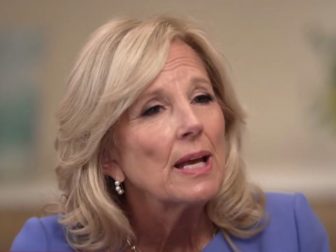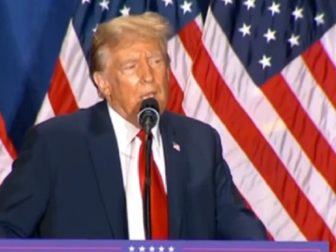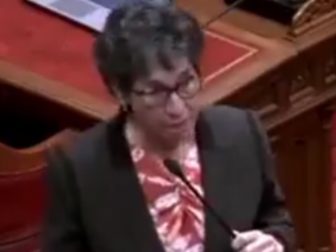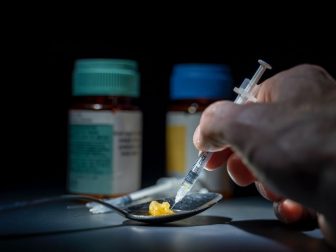Lake Campaign Calls for Redo of Maricopa County Due to Widespread Vote Machine Malfunctioning on Election Day
The Kari Lake campaign for Arizona governor called for a redo of Maricopa County’s election in light of the vote tabulation machines malfunctioning in over 30 percent of polling locations on Election Day last week.
The campaign posted on its official Twitter account Wednesday, “This election was irreparably compromised by voter disenfranchisement.”
“The appropriate thing to do would be to let Maricopa County cast their votes again,” the Republican candidate’s team added.
The post came in response to a tweet noting Lake continued to close the distance with Democrat gubernatorial candidate Katie Hobbs with now approximately 17,000 votes separating them or 0.06 percent of the ballots cast.
Meanwhile, GOP attorney general candidate Abe Hamadeh is now only 771 votes behind Democrat Kris Mayes or less than 0.01 percent.
A recount is triggered when the difference between the candidates is 0.05 percent or less.
Imagine if the tabulators had worked in primarily red districts!
Again, this election was irreparably compromised by voter disenfranchisement.
We don’t care if this is unprecedented.
The appropriate thing to do would be to let Maricopa County cast their votes again. https://t.co/ckUht5N8h5
— Kari Lake War Room (@KariLakeWarRoom) November 16, 2022
Over 2.5 million ballots have been cast statewide in the contest, and more than 1.5 million came out of Maricopa County, which encompasses the Phoenix metropolitan area.
[firefly_poll]
Maricopa accounts for 60 percent of the registered voters in Arizona.
There is no doubt the candidates most impacted by the 70 polling locations experiencing inordinately long lines due, in part, to vote tabulating machines malfunctioning were Lake and Hamadeh.
Hamadeh tweeted on Saturday, “REMEMBER: 72%+ of the votes on Election Day in person were Republican. When you have 30% of the tabulating machines failing, causing people to leave the lines and give up. This is voter suppression targeting a political party.”
Here is the problem w/ what happened in Maricopa County on Election Day. This is Anthem, north of Phoenix at about 1:15 pm. Ruby red district of about 30K people. Only one polling location. Ballot tabulators not working in the morning. 2 hr wait to vote midday and still at 6 pm. pic.twitter.com/CY35yQWwq5
— Randy DeSoto (@RandyDeSoto) November 14, 2022
Despite all the Election Day problems, Lake was able to close Hobbs’ lead from double-digits (about 183,000 votes), based on her advantage in the early voting tallies, to less than a percent (about 12,000 votes) by the Wednesday following the election, thanks to Election Day votes.
In her August primary, Lake took the lead over establishment Republican pick Karrin Taylor Robson the day after the election because of Election Day totals. Robson, like Hobbs, had leapt out to a double-digit lead on election night due to early voting and mail-in ballots.
Unlike the primary race, Lake never had to lead against Hobbs and arguably that may have been due to vote tabulator machine problems across Maricopa County on Election Day.
The Western Journal received over 20 exclusive videos featuring Arizona voters explaining how difficult it was for them to cast their ballots. One voter had to wait in line for seven hours.
This same scene played out tens of thousands of times all across Maricopa County. How many voters were disenfranchised or simply ran out of time? If the majority of ED voters were Democrats, this would be the number 1 news story in America still today. Total joke pic.twitter.com/noY1RRQv0Q
— Charlie Kirk (@charliekirk11) November 14, 2022
Given the 17,000 votes separating Lake and Hobbs, it would take a net of approximately 240 Lake voters per the 70 ill-function polling stations to make the difference.
For Hamadeh, it would be just 11.
It seems conceivable that hundreds of people per location either left the line or didn’t show up when they heard about the hours-long wait times.
The Lake campaign tweeted Tuesday night, “This race will come down to a few thousand votes and tabulators were down for hours in red districts. Shame on the media for trying to make excuses for this [disenfranchisement].”
This race will come down to a few thousand votes and tabulators were down for hours in red districts.
Shame on the media for trying to make excuses for this.
— Kari Lake War Room (@KariLakeWarRoom) November 16, 2022
Maricopa Count tweeted on Election Day, “Advice for Voters: If a tabulator is not working at a site, you can still vote! You have the option to cast your ballot and place it into the secure ballot box.”
Of course, that does not take into account the inability of would-be voters to obtain a ballot if they did not have the time to wait in line for hours.
Maricopa County Board of Supervisors Chairman Bill Gates encouraged voters on Election Day to go to try another location if the one they were trying to vote at had long lines or tabulator problems.
Gates says in the video below the issue was occurring in 20 percent of the locations, but it was later determined to be over 30 percent, according to The Washington Post.
Here is a message from Chairman Bill Gates and Recorder Stephen Richer with an update for @maricopacounty voters on Elections Day. pic.twitter.com/OkQczCklGb
— Maricopa County Elections Department (@MaricopaVote) November 8, 2022
Again, if voters are used to their polling location, finding another and hoping the scene would be different could have may have kept them from obtaining a ballot.
This article appeared originally on The Western Journal.



